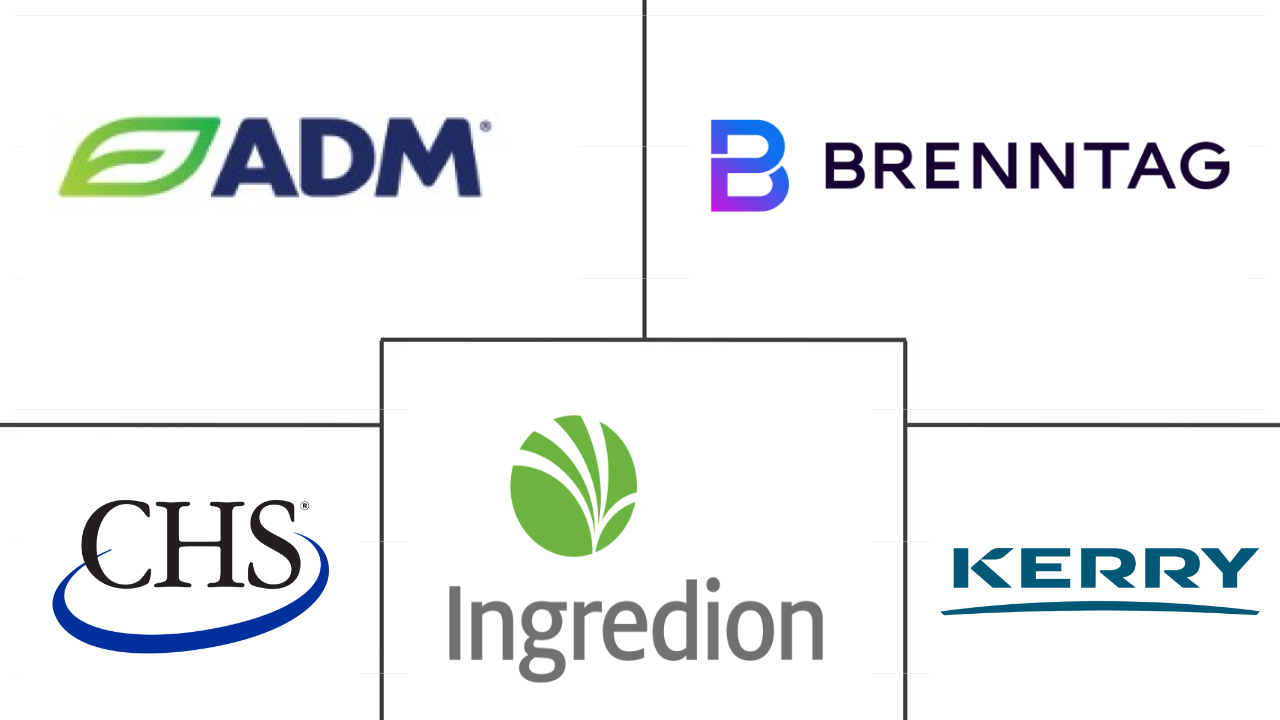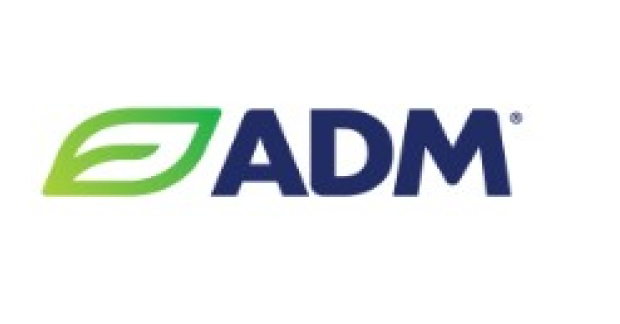Market Size of germany plant protein Industry
|
|
Study Period | 2017 - 2029 |
|
|
Market Size (2024) | USD 461.4 Million |
|
|
Market Size (2029) | USD 574.9 Million |
|
|
Largest Share by End User | Food and Beverages |
|
|
CAGR (2024 - 2029) | 4.50 % |
|
|
Fastest Growing by End User | Supplements |
Major Players |
||

|
||
|
*Disclaimer: Major Players sorted in no particular order |
Germany Plant Protein Market Analysis
The Germany Plant Protein Market size is estimated at 461.4 million USD in 2024, and is expected to reach 574.9 million USD by 2029, growing at a CAGR of 4.50% during the forecast period (2024-2029).
461.4 Million
Market Size in 2024 (USD)
574.9 Million
Market Size in 2029 (USD)
4.74 %
CAGR (2017-2023)
4.50 %
CAGR (2024-2029)
Largest Market by Product Type
64.93 %
value share, Soy Protein, 2023
Soy protein dominates over all the plant protein types due to its high protein content, low viscosity, solubility, etc., which enable it to provide extensive applications across sectors.
Largest Market by End User
38.81 %
value share, Food and Beverages, 2023
The F&B segment dominates the market, primarily led by meat and dairy alternatives due to the functionalities of plant proteins, which makes them a highly preferred ingredient in these industries.
Largest Market by Product Type
10.15 %
Projected CAGR, Pea Protein, 2024-2029
Pea proteins are gaining high demand from meat alternatives as they provide quick rehydration, neutral taste, and texturizing properties.
Fastest growing Market by End User
7.48 %
Projected CAGR, Supplements, 2024-2029
The rising consumer focus on health and sports fitness is anticipated to drive the segment. Among all, the preference for soy in the sector is propelling segmental growth.
Leading Market Player
13.69 %
market share, Archer Daniels Midland Company, 2021

Archer Daniels Midland Company is the market leader and is focused on catering to market trends like healthy snacking to extend its portfolio and maintain its high-quality offerings.
Increasing lactose-intolerant population in Germany with growing demand for natural products is driving the segmental growth
- By end user, the market is led by the food and beverages segment, majorly due to the increasing preference for plant-based foods as a sustainable alternative. It was mainly driven by the meat alternatives segment, with a share of around 25% by value in 2022, due to the growing demand for meat substitutes, owing to the rising trend of veganism. The trend resonates with consumers' growing interest in veganism and the increasing lactose-intolerant population in the country. Germany ranked second in Europe in terms of the number of vegans in 2022. More than 2.5 million vegans reside in the nation, and the country is renowned for its plant-based and meat alternative industries.
- Supplements are anticipated to be the fastest-growing segment in the market, with a CAGR of 7.15% during the forecast period, owing to their several health benefits. Weight management and general health and well-being are the major concerns among German consumers, which act as driving factors for the increasing demand for plant protein in various supplements. Plant proteins, such as rice and peas, are gaining popularity for being hypoallergenic and a nutritious alternative for people suffering from lactose intolerance. About 16% of the German population was lactose intolerant in 2022, leading to high demand for plant-based proteins.
- The usage of plant proteins in the personal care and cosmetic industry is still at a nascent stage due to the prevalence of other effective bioactive ingredients such as antioxidants, mineral oils, and alcohol. The German population's interest in a greener lifestyle is boosting the demand for natural and plant-based beauty products with vegan claims. Germany has the most number of vegans in Europe, which doubled from 1.3 million in 2016 to 2.6 million in 2020.
Germany Plant Protein Industry Segmentation
Hemp Protein, Pea Protein, Potato Protein, Rice Protein, Soy Protein, Wheat Protein are covered as segments by Protein Type. Animal Feed, Food and Beverages, Personal Care and Cosmetics, Supplements are covered as segments by End User.
- By end user, the market is led by the food and beverages segment, majorly due to the increasing preference for plant-based foods as a sustainable alternative. It was mainly driven by the meat alternatives segment, with a share of around 25% by value in 2022, due to the growing demand for meat substitutes, owing to the rising trend of veganism. The trend resonates with consumers' growing interest in veganism and the increasing lactose-intolerant population in the country. Germany ranked second in Europe in terms of the number of vegans in 2022. More than 2.5 million vegans reside in the nation, and the country is renowned for its plant-based and meat alternative industries.
- Supplements are anticipated to be the fastest-growing segment in the market, with a CAGR of 7.15% during the forecast period, owing to their several health benefits. Weight management and general health and well-being are the major concerns among German consumers, which act as driving factors for the increasing demand for plant protein in various supplements. Plant proteins, such as rice and peas, are gaining popularity for being hypoallergenic and a nutritious alternative for people suffering from lactose intolerance. About 16% of the German population was lactose intolerant in 2022, leading to high demand for plant-based proteins.
- The usage of plant proteins in the personal care and cosmetic industry is still at a nascent stage due to the prevalence of other effective bioactive ingredients such as antioxidants, mineral oils, and alcohol. The German population's interest in a greener lifestyle is boosting the demand for natural and plant-based beauty products with vegan claims. Germany has the most number of vegans in Europe, which doubled from 1.3 million in 2016 to 2.6 million in 2020.
| Protein Type | |
| Hemp Protein | |
| Pea Protein | |
| Potato Protein | |
| Rice Protein | |
| Soy Protein | |
| Wheat Protein | |
| Other Plant Protein |
| End User | |||||||||||||
| Animal Feed | |||||||||||||
| |||||||||||||
| Personal Care and Cosmetics | |||||||||||||
|
Germany Plant Protein Market Size Summary
The Germany plant protein market is experiencing significant growth, driven by a rising consumer preference for plant-based foods and supplements. This shift is largely attributed to the increasing popularity of veganism and the growing lactose-intolerant population in the country. The food and beverages segment leads the market, with meat alternatives being a major contributor due to the demand for meat substitutes. Plant proteins such as soy, wheat, and pea are gaining traction for their nutritional benefits and cost-effectiveness, making them popular choices in various processed foods. The market is also witnessing a surge in the supplements segment, as consumers prioritize health and wellness, further boosting the demand for plant-based proteins.
The market landscape is characterized by a fragmented structure, with key players like Archer Daniels Midland Company, Brenntag SE, CHS Inc., Ingredion Incorporated, and Kerry Group PLC holding a significant share. The German government's initiatives to promote the cultivation of protein crops, such as soybeans and peas, are supporting the market's expansion. These efforts are complemented by the increasing demand for clean-label ingredients and natural products, prompting manufacturers to innovate and meet consumer expectations. The market's growth is further supported by favorable government policies aimed at reducing lifestyle-related diseases, encouraging a shift towards plant-based diets. As a result, the plant protein market in Germany is poised for continued expansion, with a focus on sustainability and health-conscious consumer trends.
Germany Plant Protein Market Size - Table of Contents
-
1. MARKET SEGMENTATION (includes market size in Value in USD and Volume, Forecasts up to 2029 and analysis of growth prospects)
-
1.1 Protein Type
-
1.1.1 Hemp Protein
-
1.1.2 Pea Protein
-
1.1.3 Potato Protein
-
1.1.4 Rice Protein
-
1.1.5 Soy Protein
-
1.1.6 Wheat Protein
-
1.1.7 Other Plant Protein
-
-
1.2 End User
-
1.2.1 Animal Feed
-
1.2.2 Food and Beverages
-
1.2.2.1 By Sub End User
-
1.2.2.1.1 Bakery
-
1.2.2.1.2 Beverages
-
1.2.2.1.3 Breakfast Cereals
-
1.2.2.1.4 Condiments/Sauces
-
1.2.2.1.5 Confectionery
-
1.2.2.1.6 Dairy and Dairy Alternative Products
-
1.2.2.1.7 Meat/Poultry/Seafood and Meat Alternative Products
-
1.2.2.1.8 RTE/RTC Food Products
-
1.2.2.1.9 Snacks
-
-
-
1.2.3 Personal Care and Cosmetics
-
1.2.4 Supplements
-
1.2.4.1 By Sub End User
-
1.2.4.1.1 Baby Food and Infant Formula
-
1.2.4.1.2 Elderly Nutrition and Medical Nutrition
-
1.2.4.1.3 Sport/Performance Nutrition
-
-
-
-
Germany Plant Protein Market Size FAQs
How big is the Germany Plant Protein Market?
The Germany Plant Protein Market size is expected to reach USD 461.36 million in 2024 and grow at a CAGR of 4.50% to reach USD 574.93 million by 2029.
What is the current Germany Plant Protein Market size?
In 2024, the Germany Plant Protein Market size is expected to reach USD 461.36 million.

